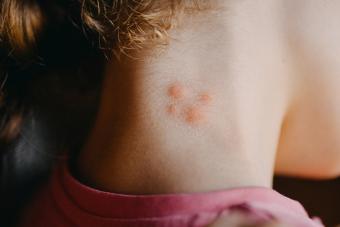
Recovering from a poison sumac rash can be a major inconvenience. Read on for information about what poison sumac is, how it can be avoided, and what to do if you fall victim to this irritating plant.
What is Poison Sumac?
The poison sumac rash comes from the plant of the same name. A shrub that grows in various regions around the globe including the United States, every part of its composition contains urushiol, a resin that causes varying levels of skin irritation. If a poison sumac is burned, inhaling the smoke can cause a bout of diarrhea and other internal reactions no one welcomes.
You usually find poison sumac in swampy and damp areas, such as the eastern U.S. and Canada. Brushing up against any parts of this plant can cause a reaction in the skin, which is similar to a severe attack of poison ivy.
The Symptoms of Poison Sumac Rash
If you have come into contact with poison sumac, your first symptom will be an extremely persistent itch on the surface of the skin. After the itching begins to feel incapable of relief, a red inflammation begins to appear followed by skin blistering. If you have an extreme reaction to the plant's resin, you can also develop sores that ooze fluid as a result of constricted blood vessels.
How Can It Be Prevented?
You can prevent a poison sumac rash by washing exposed areas within 15 minutes of contact. After this, it can be very difficult to prevent a reaction from occurring. You may get lucky, as around 20% of individuals do not experience a reaction at all. However if you are part of the majority, you can expect to deal with symptoms for 12 to 15 days.
You can also prevent poison sumac irritation by wearing long pants and sleeves when out in nature. Learning about the various species of native plant life in your hometown or places you plan to travel can also help you to avoid situations dangerous to the skin.
Treating Poison Sumac
If you have been afflicted with this plant's difficult oil, it is still a good idea to wash your skin completely several times even if it has been over 15 minutes since initial exposure. Since it does take a fair bit of time for the resin to start affecting the area, you can attempt to minimize the amount of irritation you incur by thoroughly cleaning and rinsing the skin.
Be careful not to spread the rash by touching your irritated skin area. Calamine lotion should quickly be added to your shopping list, as you will be applying it liberally over the next two weeks. Using a gauze soaked in calamine lotion and then fastening to the skin with surgical tape is a great way to bring a continual dose of relief. Some also have found comfort in baking soda rubs, oatmeal baths, and a treatments of Epsom salts. If you plan ahead, some doctors offer a vaccine that can be injected or taken orally, however it only takes effect if consumed before contact occurs.
Is it Contagious?
While touching the oil on skin can cause irritation to be transferred, once the skin is sufficiently cleansed the sumac attack is not contagious. The blisters and oozed liquid is also not able to cause irritation in others, so mothers rest assured you can treat your unhappy rash victims without risking exposure to it yourself.
Poison sumac is almost impossible to eliminate from a yard or park, as it is a hardy plant able to survive the elements and any attempt at uprooting. The best way to stop a poison sumac rash from occurring is to learn to avoid it altogether.







